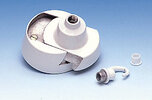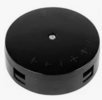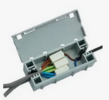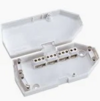Hello All
I thought that all junctions required strain relief so tend to use Ashley JBs or chocboxes. Is that right?
If so, how are back boxes and ceiling roses ok? I guess for back boxes it might be good practice to clip near entry but that's not always possible for plasterboard boxes.
I'm asking as I'm updating some lighting and when changing fittings trying to improve on the current methods of choc block wrapped in insulation tape and old ceiling roses shoved up into the void.
Thanks
I thought that all junctions required strain relief so tend to use Ashley JBs or chocboxes. Is that right?
If so, how are back boxes and ceiling roses ok? I guess for back boxes it might be good practice to clip near entry but that's not always possible for plasterboard boxes.
I'm asking as I'm updating some lighting and when changing fittings trying to improve on the current methods of choc block wrapped in insulation tape and old ceiling roses shoved up into the void.
Thanks





